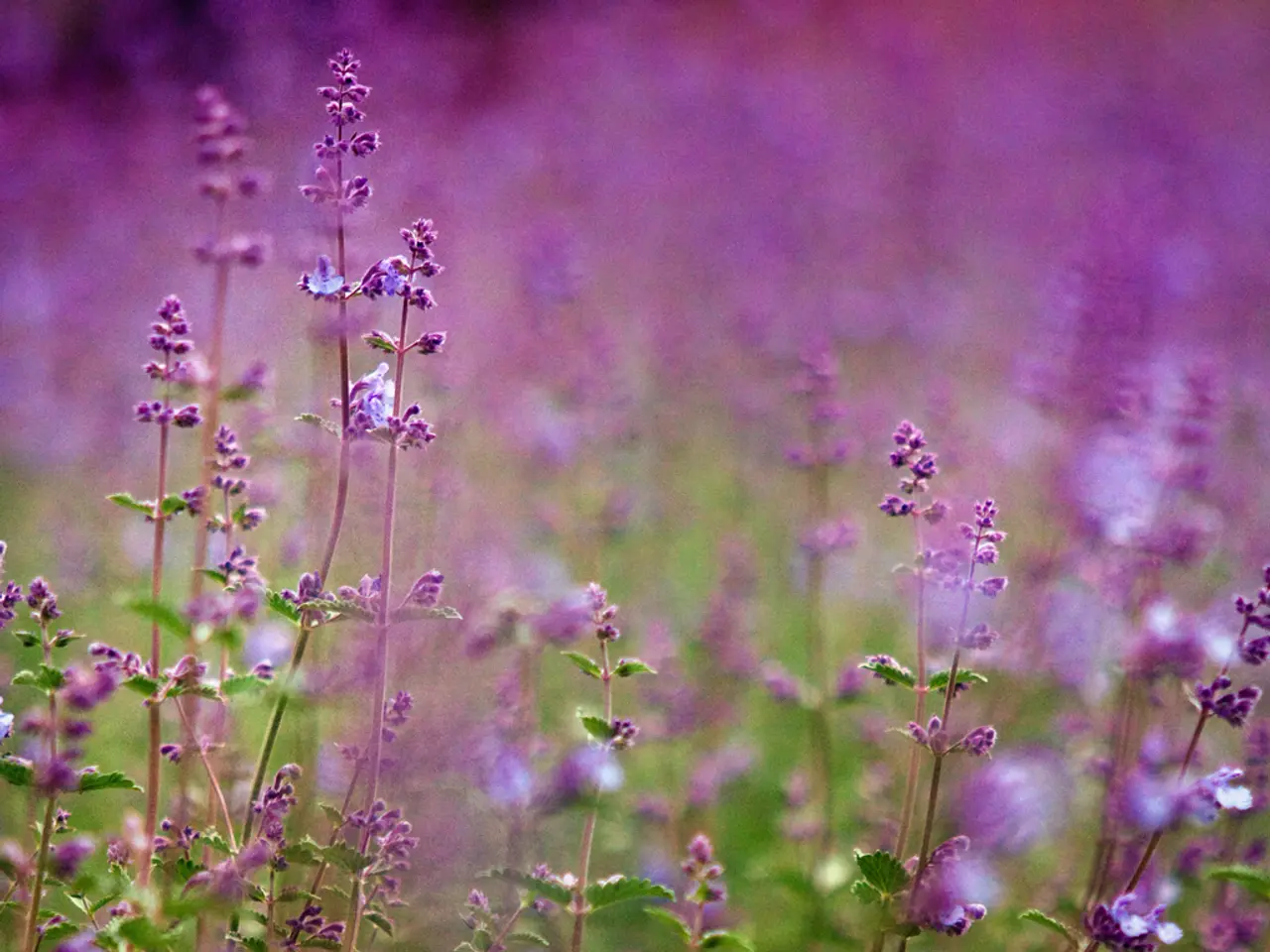Optimal Time and Methods for Lavender Harvest: Discerning the Ideal Moment and Approaches
In the world of gardening, lavender stands out as a versatile and fragrant plant that not only adds beauty to any garden but also supports local ecosystems by attracting bees and other pollinators. Here are some best practices for harvesting, drying, and using lavender to maximize its fragrance and beneficial properties.
Harvesting
The best time to harvest lavender is in the morning after the dew has evaporated but before the sun is high. This is when the essential oil content and fragrance are at their peak. Cut the stems when about 50-75% of flower buds have opened; this is when lavender's fragrance and oil concentration peak. Avoid harvesting once flowers are fully bloomed and fading, as this reduces oil quality.
For small harvests, cut 2 to 3 inches from leaf tips; for drying and bundles, harvest softwood stems up to 8 inches long. Use sharp scissors or pruners, and shape the plant with rounded cuts to encourage bushy regrowth.
Drying
Tie the lavender stems into bunches and hang them upside down in a warm, dry, well-ventilated spot, protected from direct sunlight to preserve aroma. Avoid moisture and ensure air circulation; good places include under eaves, in a garage, or shaded garden areas. Drying takes about 2-4 weeks; the lavender is fully dry when buds easily fall off the stem with little resistance. After drying, you can gently rub or shake the buds off stems to store separately.
Using Lavender
For making homemade lavender oil, harvest young, fresh flowers and dry them at low heat or air-dry to preserve beneficial compounds. Use a high-quality, cold-pressed carrier oil such as jojoba, sweet almond, or olive oil for infusion, depending on intended use (topical or culinary). Store dried lavender buds in sealed glass jars in a cool, dark place to maintain fragrance and potency. Dried lavender can be used for sachets, cooking, baking, essential oils, wreaths, or homemade skincare preparations.
Adhering to these practices ensures optimal fragrance retention and preservation of lavender's therapeutic properties. Glen, a gardening expert with over 15 years of experience in garden maintenance, design, and landscaping services, shares these tips to help you make the most of your lavender plants.
Glen creates helpful content for a blog, with latest posts including "Garden Fungicides: Essential Tips for Disease-Free Plants", "When to Pick Candy Cane Peppers: Optimal Harvest Time Guide", and "When to Pick My Watermelon: A Gardener's Guide".
Harvesting lavender at the right time, when about 50-75% of flower buds have opened, ensures the highest fragrance and oil concentration. After harvesting, dry the stems in a warm, dry, well-ventilated area, avoiding direct sunlight and moisture, to preserve the aroma.
Glen, a home-and-garden expert, suggests using dried lavender buds for various purposes, including sachets, cooking, baking, essential oils, wreaths, or homemade skincare preparations, as part of a versatile and fragrant lifestyle.



